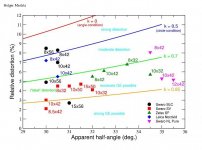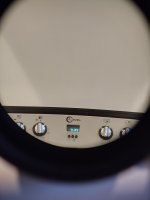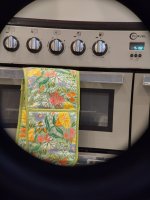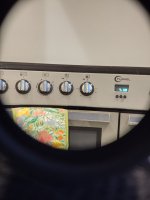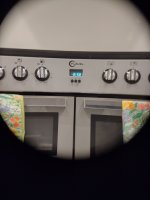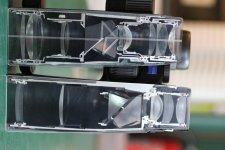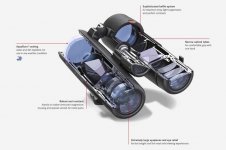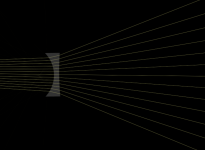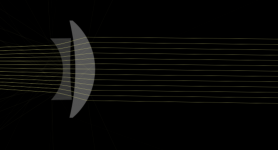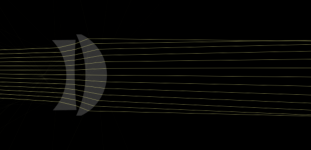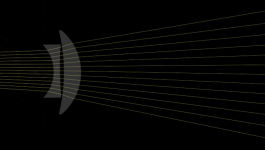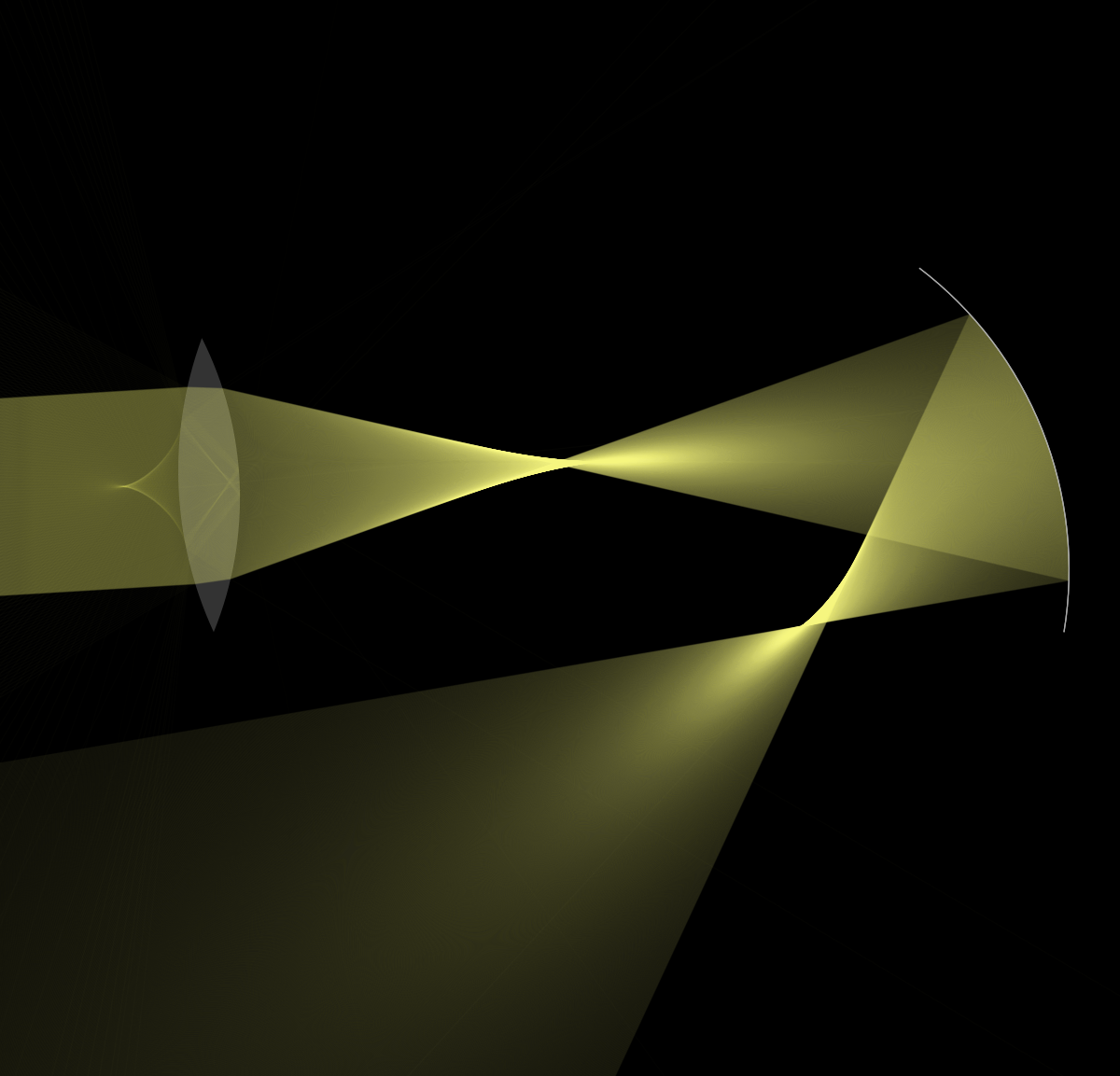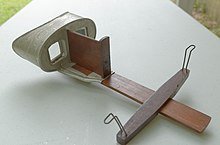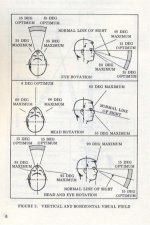With all this understood, further questions arise:
1. What is such complex distortion trying to accomplish? Is it an attempt to offer the best of both worlds, reducing the bending of straight lines near the edge while also minimizing the compression effect to keep panning comfortable? Why then does its profile vary among models, even of the same line? (Not to mention, how is any of this even possible? Surely some very complex aspheric surfaces are needed in the eyepiece.)
2. How did these two things come to be done together in Swarovision? Are they really separate innovations, or is the purpose of the distortion profile somehow related to having sharper field edges? (Does that make distortion effects worse? Did the calculations required for one make the other necessary as well?)
3. Why is this approach taking over the alpha binocular market when many don't need it, and some even dislike it? The RB effect has been reduced in more recent designs, but some are still sensitive to it. Some feel that sharpness throughout gives an unnaturally "flat" view, though it's not obvious why since any binocular offers a much narrower field than normal vision to begin with, and the eye itself has only a limited central area of sharpness that doesn't even cover that. Are they perceiving something subconsciously through peripheral vision? (I'm not drawn to such designs myself and would like to know why, since I don't share these objections and can't point to anything else specific that bothers me.)
I could say more, but possibly that's enough to get a discussion started...
First Tenex thanks for taking the time to write this comprehensive set of history, observations, technical explanations and finally these questions. It is refreshing to get beyond todays fashionable email, text, short one line conversations about things. Some stuff deserves this sort of discussion.
The back and forth between you and kimmik seems serendipitous. That combined with my set of Holger bookmarked articles on Rolling Balls, AMD, etc to include the one posted above in #9, that seemed most relevant to the technical parts of this discussion, has helped me at least to follow along.
Regards the questions posted at the end of the two pieces, I come to a different place answer-wise. I feel like there's two areas of consideration that are not so much addressed by the optical engineering details, that may provide part of the answers you seek.
First, my sense is the direct and explicit answers to these questions belong with the makers. And they're not talking. Looking back at some of the history and thinking about the world that existed when those milestone binoculars were developed, one can only wonder on what was the process employed within the companies that decided to make binoculars with those design choices. Did they hire a "renowned" optical expert of the day, someone who'd done research, maybe taught, published and was known in the optics community? Did a company hire that person and put their ideas of what a binocular should be, into the binocular they brought to market? And that became their signature?
What about today's probably more complex market and evolved businesses? Would there be a design team comprised of a more modern evolved optics engineering group riding on the shoulders of those past greats. Might (probably) that team include representatives from Process Engineering and manufacturing as sometimes a design has to be modified to fit into the available manufacturing processes. Think of the NL, for example. Last, definitely not least, can we suspect the modern marketing/product planning group are not a bunch of innocent bystanders waiting to drop advertising and deploy salesman, but rather have performed sophisticated market research to drive the design choices the companies then believe will reach the most of the market it can. If I have this right then many of the answers to your questions lie with these folks.
Based on the inputs here, we should now understand bino makers were making a choice. The things some folks do not like were not inadvertent mistakes, but the necessary product of the tradeoffs known and made. The fair question left to Swaro, Zeiss. Leica, etc is "What were they thinking!?" Wouldn't we love to know?
Second, Birdforum as we have discussed is a rather exclusive place. It is a quite small group of active participants with an unusual interest in binocular performance. For many here, looking at and studying the binocular is at least as important as looking through them and seeing the the world beyond the glass, magnesium and rubber. Binocular companies need markets bigger than us, need the much broader audience of people throughout the world that just want to see things closer and/or bigger. Do we represent what the larger market sees but does not recognize/understand? Possibly. As an example some here don't get flat field. Some do. As I read your preferences I wonder, are they the product of that 10 years of using those UV1032s with what you describe as conventional design and so Els and NLs represent a difference that you've not yet used long enough to see why? When I look out at the world through the eyes and brain I possess, sans binoculars, I dont see the view described by folks who like that convention. The view I experience, especially in the central better focused area is essentially flat. It does not curve off at the edge. It does get blurry, waiting for the movement of the approaching saber tooth tiger to trigger head and leg motion. Wouldn't I want ny binocular to represent what my eyes see? Whether I'm and eye panner or binocular panner - thank you Kimmik for those phrases - wouldn't a widish field that has a quality view all the way to the edge be useful? If we can get that with all the optical engineering work you and kimmik have described, why not? I dont mean to infer folks who dont like flat field haven't tried it and/or are set in their ways, apologies if it came off that way. I totally respect we each see things the way we do and have our innate differences. It is this complexity of the human component that Im thinking about, regarding your questions.
In these first and second reactions to the questions you ask, Ive posed more, not answered any. It seems the human element and the manufacturing piece are at least as important to providing those answers. The human piece is likely way more complex. The manufacturing choices chase those and yield the answers to why those optical choices, I suspect.





